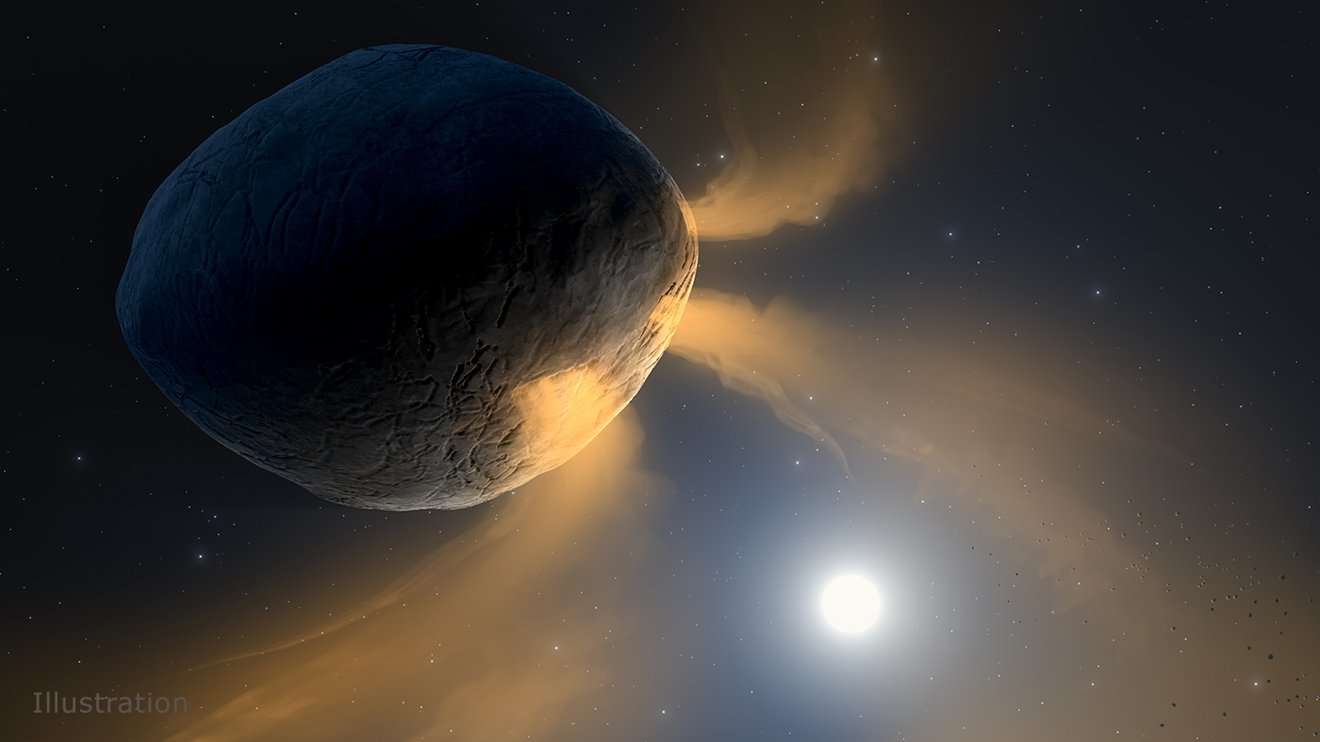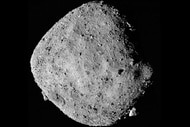Create a free profile to get unlimited access to exclusive videos, sweepstakes, and more!
This asteroid fizzes like Pop Rocks in space (and could almost pass for a comet)

If asteroids don’t normally have tails like comets, then what is that thing, which is clearly not made of ice, streaking across the void with what is very obviously a vapor trail behind it?
Comet tails result from ices vaporizing into space with solar heat, taking particles of dust and rock with them. Asteroids usually have no tails because most are solid rock. Phaethon is an asteroid that breaks the rules, because while it doesn’t have much ice, sodium deep inside it escapes and starts “fizzing” out of the rock at high enough temperatures when it reaches the vicinity of Mercury’s orbit. Bursts of sodium vapor make it look like cosmic fizzing candy.
Wait. If Phaethon is heated to the point of growing a tail, even if that tail is made of sodium vapor instead of water vapor, then what exactly is this object? It’s supposed to be a meteor. However, seeing how it acts like a comet is giving Caltech IPAC scientist Joe Masiero, who led a study recently published in The Planetary Science Journal, an alternative point of view.
“While a comet might be thought to be explosively active with strong jets, we would expect much more subdued activity on Phaethon, with just small spurts and puffs of outgassing,” he tells SYFY WIRE. “Because of the specific orbit of Phaethon, we would expect small bursts of activity for only a very short period of time around the perihelion, instead of the long periods seen with many comets.”
The perihelion of an object’s orbit is the point where it gets closest to the sun. During its 524-day orbit, Phaeton’s perihelion takes it inside the orbit of Mercury, where the sun scorches the surface of the asteroid to 1,390 degrees Fahrenheit. This is why it would be impossible for the tail of Phaeton to be the ghost of evaporated surface water or carbon dioxide or carbon monoxide—any of those substances would have been destroyed eons ago. About 0.5% of its mass is sodium, compared to a comet’s 10-80% of water ice. That explains the short bursts.
Phaethon’s fizzing really isn’t that far off from Pop Rocks. The candy that makes your mouth feel like it’s exploding is actually full of CO2 bubbles. Just like the asteroid needs to enter a zone where it is hot enough for the sodium inside to vaporize and be released in short spurts that give it a fizz effect, when the outer shell of those sugar rocks melts with the heat of your mouth, they release the carbon dioxide in a similar effect that gave them their name. The thing is, Phaethon needs way more than 98.6 degrees to start fizzing like a Pop Rock in space.
This 3.6 mile-wide asteroid is best known as the source of the yearly Geminid meteor shower (above) which happens when jets of sodium push out debris that falls towards Earth and usually burns up in the atmosphere before it hits the ground. But where did it get all of its sodium in the first place?
“Sodium was fairly common in the early solar system, and present throughout the dust cloud that formed our Sun and planets,” Masiero says. “The cloud was hottest in the inner solar system. As it cooled, the sodium would have been captured by silicate-rich materials that formed asteroids and planets. Based on this, we would expect that Phaethon formed in the inner solar system, likely in the Main Belt.”
There are other substances within asteroids that can vaporize, though not all of them would have any semblance of a tail as they outgassed. Overheating would break the silicate bonds that hold them together and cause them to disintegrate. Most Main Belt asteroids, around 75%, have an abundance of carbon. Nearly none survive trips that take them too close to the Sun, because they basically end up hurtling towards their own demise. Not many asteroids have been observed on an orbit so close to the Sun that they would be heated to death.
Asteroids that are carbon-rich (C-type) don’t put on a show like Phaethon does. So what does it really mean to be an asteroid? Or a comet? Phaethon is only repeating that question. Some comets contain more rock than expected. Certain asteroids have either more water ice or other volatiles that vaporize into tails given the right amount of heat. That fireball asteroid emoji with a tail is not exactly wrong — it could be super-heated. Masiero believes that as more objects with both comet-like and asteroid-like traits appear, the boundaries will continue to blur.
“One of the main differences we’re trying to describe is the object’s region of origin, but we’re finding that it’s harder to do quickly sometimes,” he says. “I think we are moving more toward a spectrum of understanding, with icy-active, icy-inactive, rocky-active, and rocky-inactive objects, as well as things that start out as one of those and turn into another.”
It did always seem that Pop Rocks were some sort of alien candy that fell from space.















